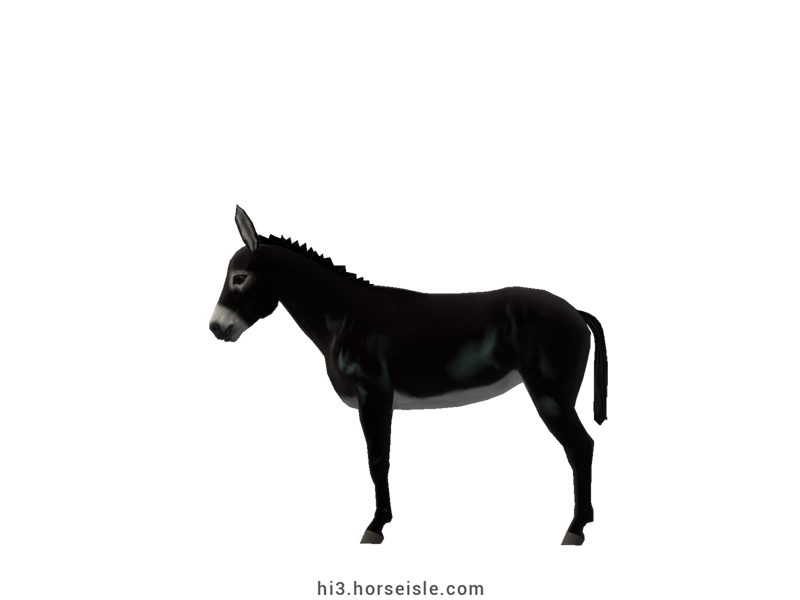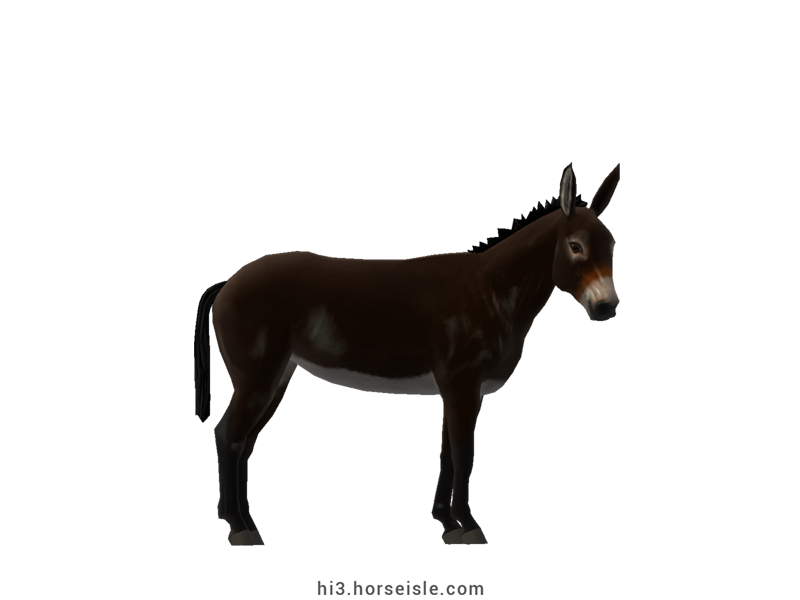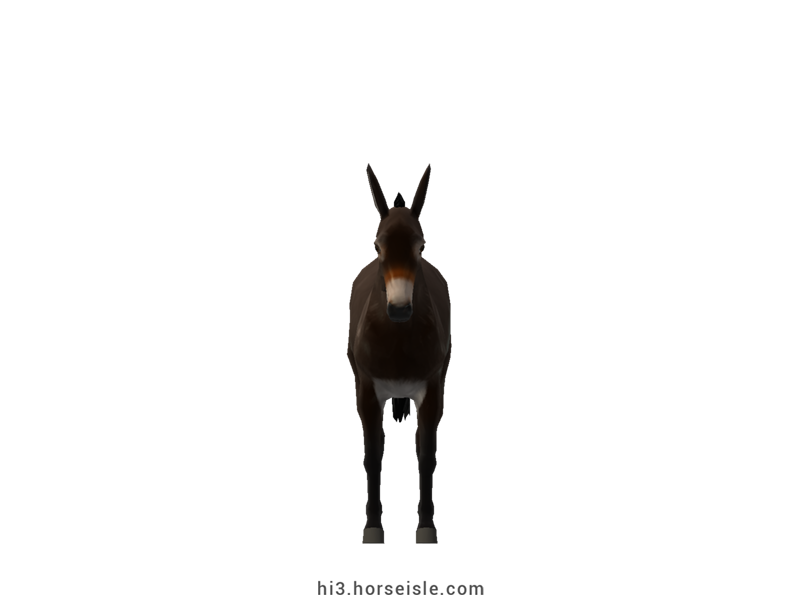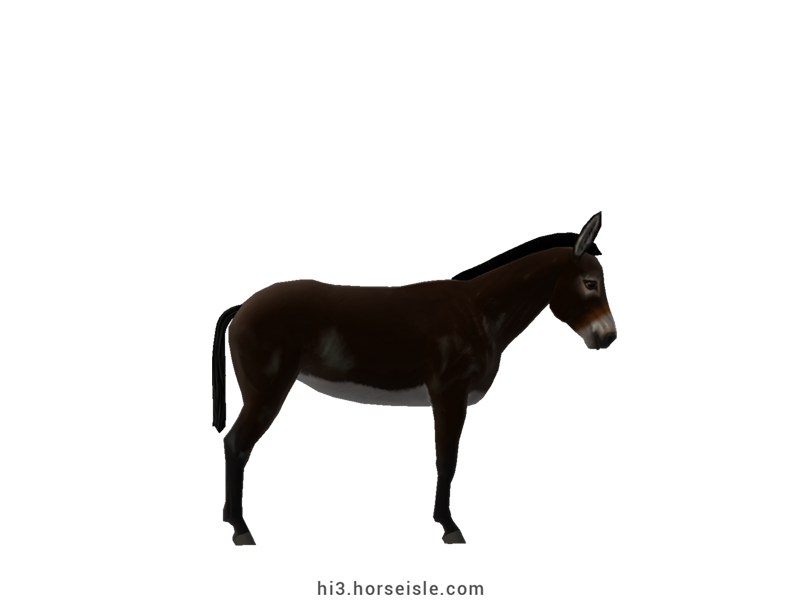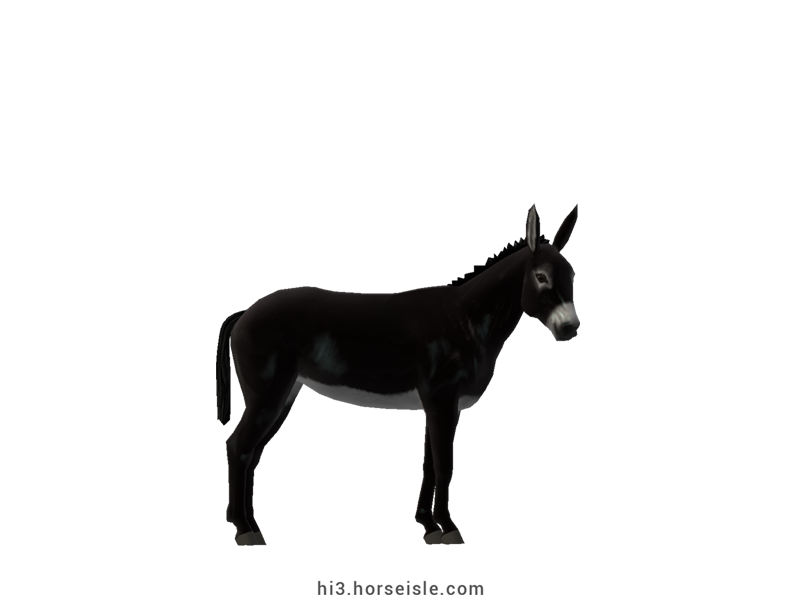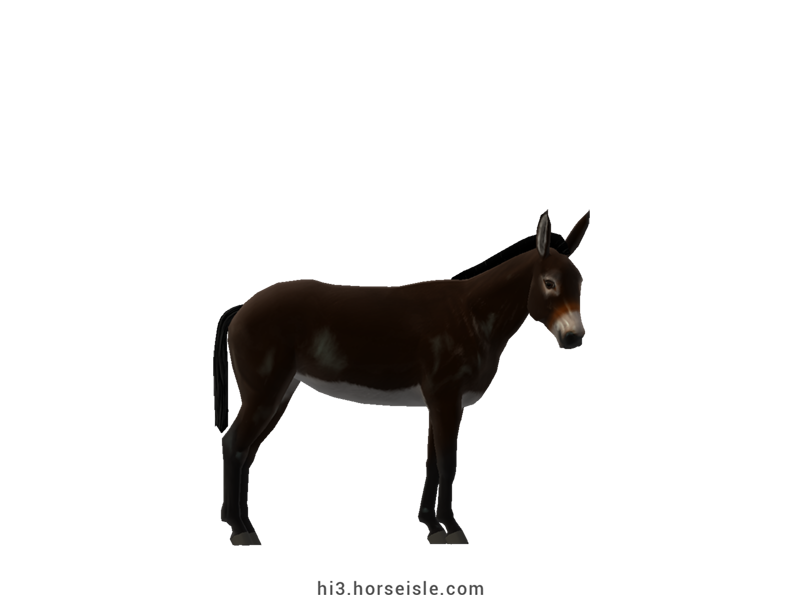Our Massive Real World Equine Reference!
[ INDEX ] Equine Type: Donkey Breed: Catalan Donkey (Catalan) [ PREV ] [ NEXT ]
An influential donkey:
Back in Roman time, well before Catalonia was formed, donkeys have already roamed the lush pasturelands of Plain of Vic. The breeding for Catalan donkeys carried on for centuries, and the breed became known as a strong beast of burden.
Catalan donkeys were imported to various countries, and served as foundation stock for the improvement of local donkeys and the development of new donkey breeds. Examples include the French Gascon, the Italian Martina Franca, and, most famously, the American Mammoth Jackstock (see these breeds for more information.)
In the 1880s, over a million Catalan donkeys roamed Spain and France, and the Spanish established an official studbook for their unique, native breed.
Falling from greatness:
Similar to other donkey and horse breeds, the advancements in agriculture and transportation drove people to give up their donkeys in favor of machinery. In 1978, only a couple thousand Catalans were left, and this led to the establishment of the Catalan association for the promotion of the Catalan donkey.
Despite their efforts, the numbers of Catalan donkeys continued to dwindle, reaching the dangerously low one-hundred-something donkeys in the 1990s. This prompted the Catalan government to initiate conservation efforts, which prevented the complete extinction of the Catalan breed.
It is also worth noting that French breeders also continued breeding Catalan donkeys, although they perceived them as a subtype of the French Pyrenean donkey. The French breeding association for the Pyrenean donkey, including its Catalan subtype, was established in 1994, and was officially recognized by the French authorities in 1997.
Today, Catalan donkeys exist primarily in Spain and France, and their numbers remain small.
Usages:
Catalan donkeys are used for both recreational driving and riding, especially on the French side of the Pyrenees where donkeys and horses are more suited than vehicles for crossing the mountainous terrain.
In addition, Catalan jacks are used for the production of mules, especially in France where they are crossed with Breton, Percheron, Merens, Castillon, and Anglo-Arabs for the production of Pyrenean mules (see 'Pyrenean Mule'.)
Last, in France, the milk of Catalan mares is used in the production of cosmetic products, especially in soaps.
Breeding rules:
The breeding of Catalan donkeys in France is different from their breeding in Spain. The French regard the Catalan as a larger subtype of the Pyrenean donkey, while the Spanish and Catalan regard it as a breed of its own.
Horse Isle combines both of these approaches. In general, the Catalan is regarded as a subtype of the Pyrenean donkey in order to allow breeders to breed Pyrenean donkeys according to the French system (see 'Pyrenean Donkey'). That said, the Catalan also has a closed studbook, to allow breeders to focus on breeding Catalan donkeys as a separate breed. This means that crossing Catalan donkeys with other donkey breeds, including with Gascon and Pyrenean, will result in a non-pure foal.
Conformation:
Catalan donkeys have a heavy head with a concave profile, large eyes, straight and relatively narrow ears, a long and muscular neck, relatively pronounced withers, a long back, an angular croup, a slim body, and somewhat narrow hooves.
The Catalan is mostly known for its height, which averages at 13.3hh, but can be as tall as 15.2hh, thus making it the second-largest donkey breed in France.
Coat:
In real Catalan donkeys, the coat is dark and short in the summer, but grows long and turns brown in the winter. This phenomenon, however, does not occur in Catalan donkeys in Horse Isle.
Catalan donkeys who don't shed their winter coat, and who have too thick or too brown of a coat in summer, are not allowed to be registered. Therefore, in Horse Isle, Catalan donkeys always have a short, dark coat.
Performance metrics:
The following are the: range, average, (SD), and MOE of performance metrics of ordered Catalan Donkeys in Horse Isle (not bred ones). In rare cases,
Speed: 13.9-15.7, 14.8 (0.4), 0.09.
Sprint: 30-44, 37 (3), 0.58.
Accel: 0.72-0.90, 0.80 (0.04), 0.01.
Decel: 0.80-0.96, 0.88 (0.03), 0.01.
Jump: 5.07-5.40, 5.24 (0.06), 0.01.
Pull: 1.35-2.20, 1.74 (0.24), 0.05.
Turning: 34.69-45.48, 40.49 (2.65), 0.52.
Reverse: 1.8-2.4, 2.1 (0.1), 0.03.
Stamina: 44.03-52.38, 47.78 (2.15), 0.42.
Reaction: 0.74-0.86, 0.81 (0.03), 0.01.
Coat & Height:
Coat: Always black or brown-black with light points, and a stomach which is white to a variable degree. The legs are dark, and the coat lacks a dorsal line, a shoulder cross, leg stripes, and markings.
Breeding notes: in order to comply with the coat standard:
1) Catalans must always have light points and a mealy coat, which means that non-mealy (pgpg) donkeys will receive a 100% penalty.
2) The legs must be dark, and therefore donkeys who are homozygous for mealy (PgPg) will also receive a 100% penalty.
==> In Horse Isle, in order to be eligible for identification as a Catalan, the donkey
Height: 12.3hh to 15.2hh.
[ INDEX ] [ PREV ] [ NEXT ]

